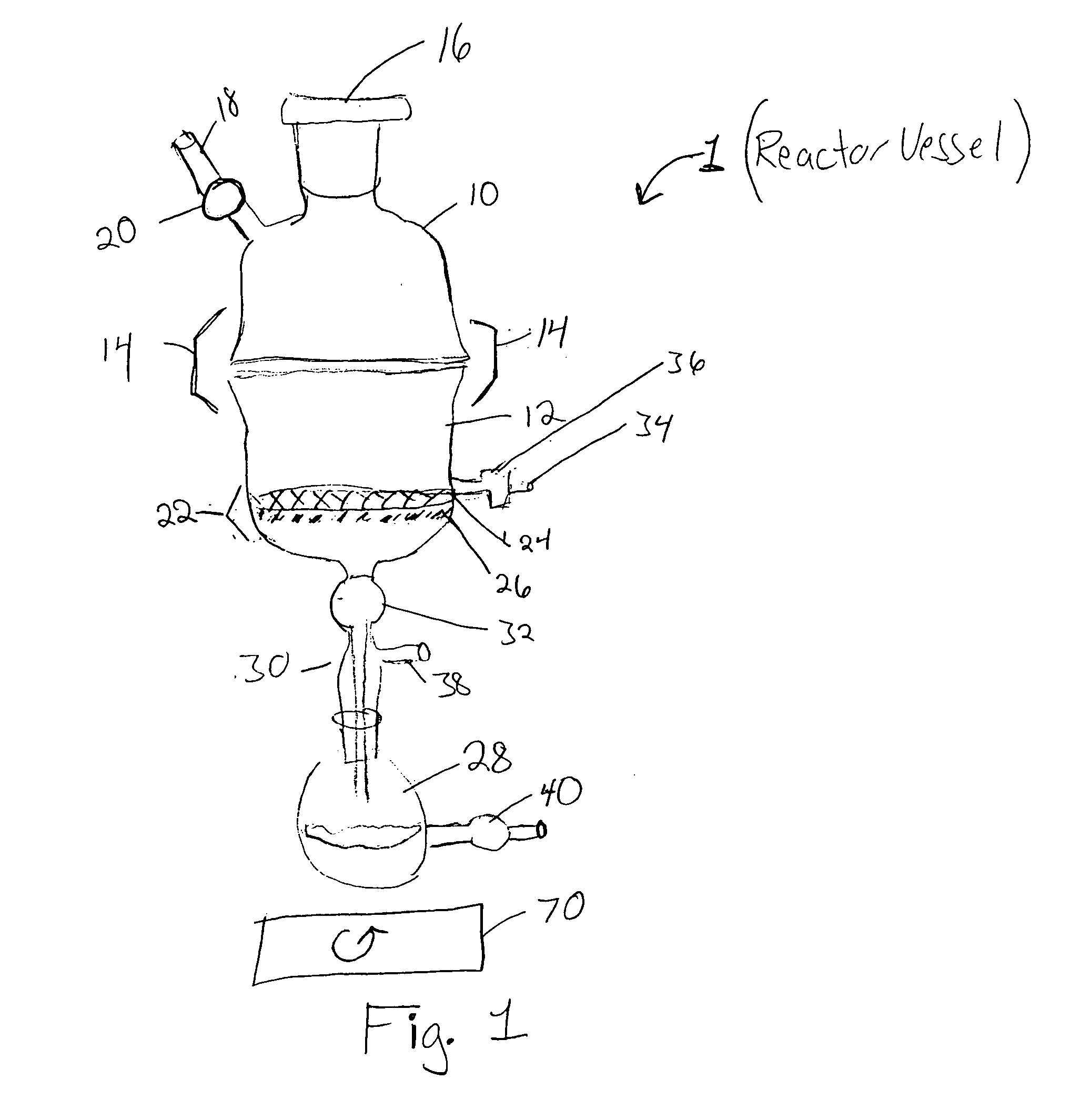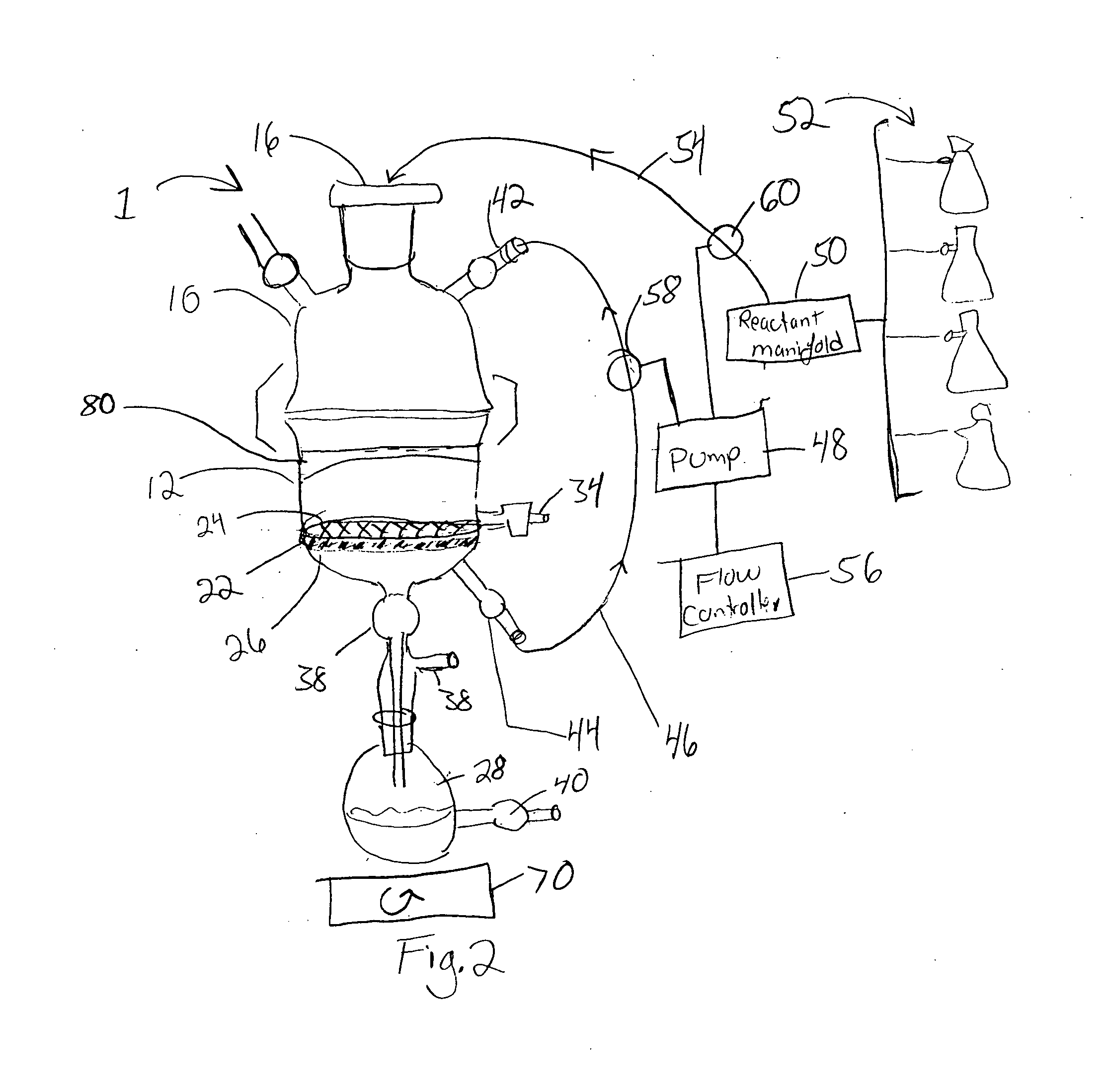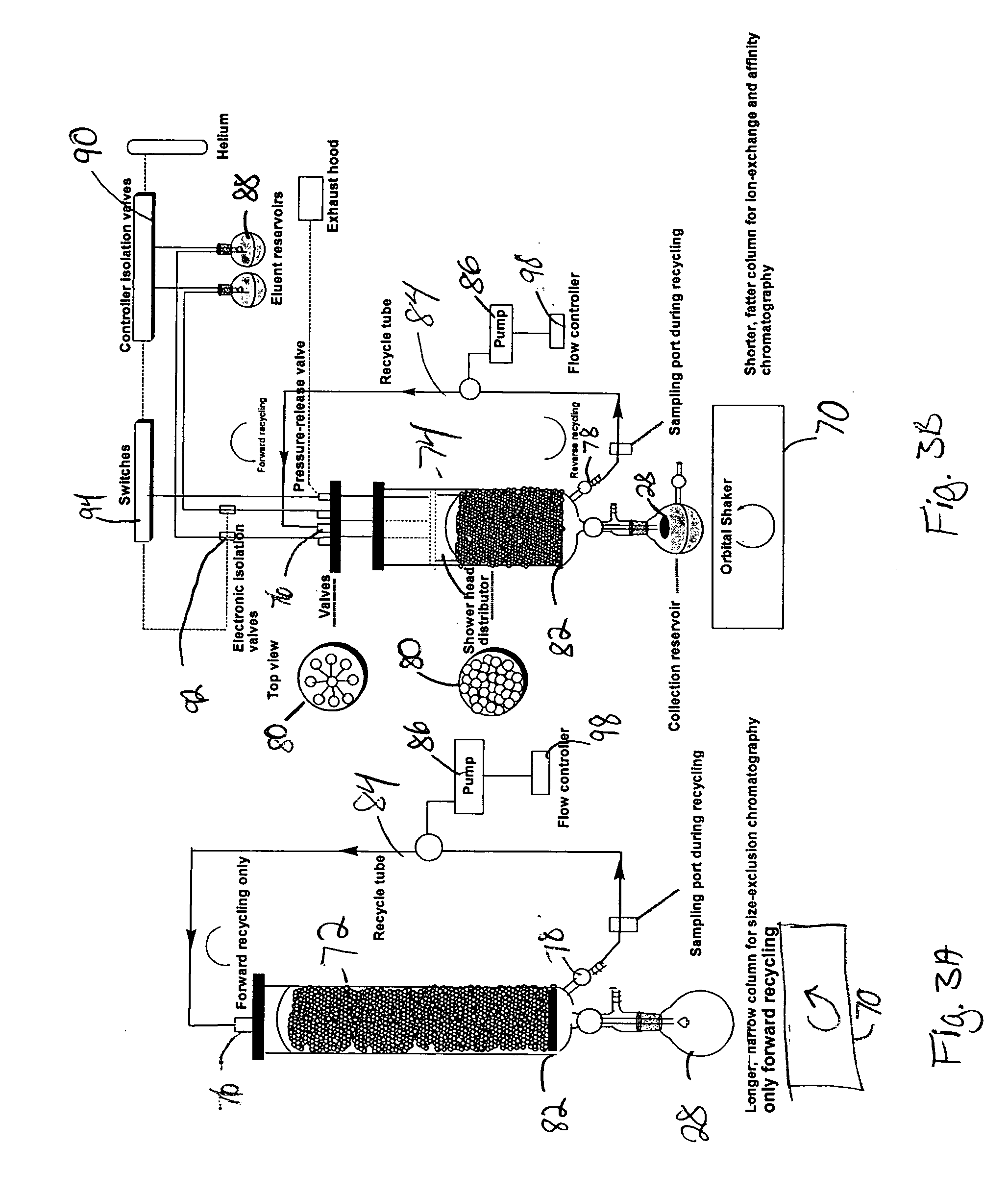Reactor for chemical synthesis
a chemical synthesis and reaction technology, applied in the field of chemical synthesis reaction technology, can solve the problems of increased cost of a given operation, wasteful process, and access to the solid matrix during the reaction
- Summary
- Abstract
- Description
- Claims
- Application Information
AI Technical Summary
Problems solved by technology
Method used
Image
Examples
example 1
Loading of Nucleosides on a Solid Support
[0055] As a representative example, we carried out the loading of 5′-O-4,4-dimethoxytriyl-N-benzoyl-deoxyadenosine (DMT-NBzdA) and 5′-O-4,4-dimethoxytrityl thymidine (DMT-T) on succinylated CPG, using the reactor of the invention in conjunction with anhydrous DMF as solvent. Using 100 g supports in each batch, we were able to achieve high nucleoside loading of 70 to 80 μmol / g with only three equivalents of nucleoside within 12 to 14 hours. Both filtration and drying operations were performed in LOTUS. The nucleoside-loaded CPG was then treated with CAP A and CAP B in the reactor. Following orbital shaking coupled with active recycling, the reaction mixture was filtered, washed and dried. Thus, the nucleoside loading, as well as, the attendant process operations could be conveniently performed in reactor of the invention. Additionally, the use of DMF instead of pyridine prevented any unpleasant odor and also aided the facile recovery of exces...
example 2
Synthesis of Dinucleotide
[0058] We tested the use of the reactor of the invention in the solid-phase synthesis of a dinucleotide 5′-U2′-OMe dA3′ using the synthesis protocol described previously. The HPLC profile of the crude showed (data not shown) less than 2% unreacted dA nucleoside where as that prepared using an Expedite synthesizer gave variable amounts of unreacted dA in synthesis. Considering that 2′-OMeU phosphoramidite is a hindered nucleoside, the high efficiency synthesis of the dinucleotide using the reactor of the invention represents a very significant step in solid phase synthesis, particularly of oligonucleotides. Excess phophoramidite was recovered and CPG was recycled after functionalization.
example 3
Chromatographic Purification of Crude Dinucleotide
[0059] In order to demonstrate the utility of the reactor of the invention and the concept of orbital shaking coupled with active recycling in purification of molecules, we purified the crude dinucleotide of Example 2. For this purpose, the commercially available Bonda Pak C-18 resin (33 g) was loaded in the reactor. By using the orbital shaking coupled with active recycling concept, the material was packed in the reactor chamber by washing with a few column volumes (2×200 mL) of water. The crude (5 millimol) was loaded on to the column. Elution was carried out with water followed by water / acetonitrile, 95 / 5; water / acetonitrile, 85 / 15; and water / acetonitrile 70 / 30 and 100% CH3CNeach 200 mL volume. Each eluent was collected via the recycling port, and a sample analyzed by reversed-phase HPLC (data not shown).
PUM
 Login to View More
Login to View More Abstract
Description
Claims
Application Information
 Login to View More
Login to View More - R&D
- Intellectual Property
- Life Sciences
- Materials
- Tech Scout
- Unparalleled Data Quality
- Higher Quality Content
- 60% Fewer Hallucinations
Browse by: Latest US Patents, China's latest patents, Technical Efficacy Thesaurus, Application Domain, Technology Topic, Popular Technical Reports.
© 2025 PatSnap. All rights reserved.Legal|Privacy policy|Modern Slavery Act Transparency Statement|Sitemap|About US| Contact US: help@patsnap.com



